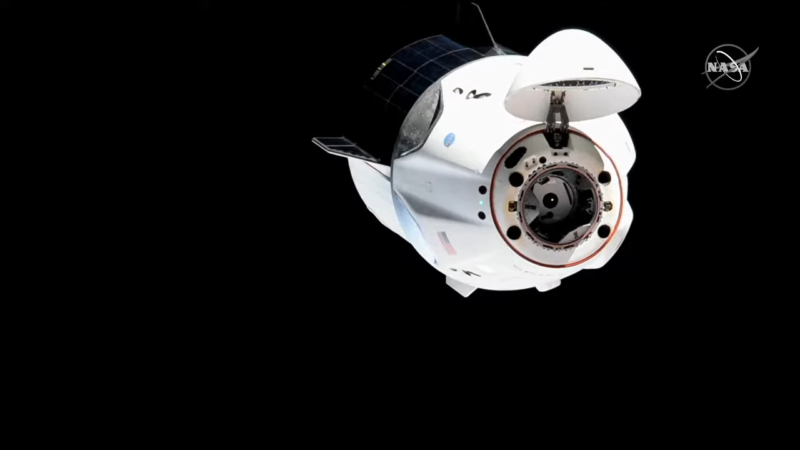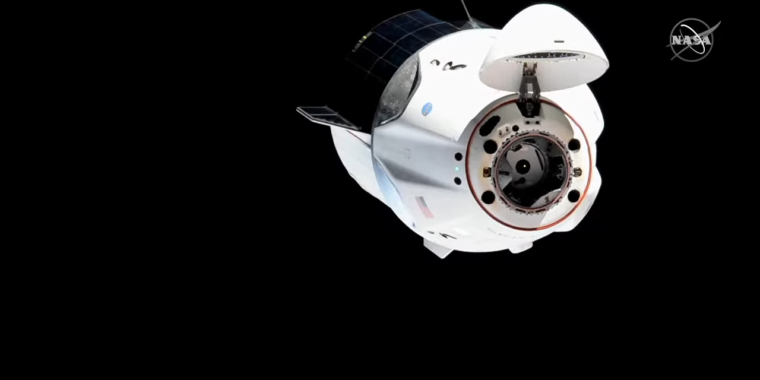
NASA TV
After weeks of speculation, NASA finally made it official Saturday: Two astronauts who flew to the International Space Station aboard Boeing’s Starliner in June will not return home aboard that vehicle. Instead, the agency has asked SpaceX to use its Crew Dragon spacecraft to fly astronauts Butch Wilmore and Suni Williams back to Earth.
“NASA has decided that Butch and Suni will return with Crew 9 next February,” NASA Administrator Bill Nelson said at the start of a news conference Saturday afternoon at Johnson Space Center.
In a sign of the seriousness of the agency's decision, both Nelson and NASA Deputy Administrator Pam Melroy attended a Flight Readiness Review meeting held in Houston on Saturday. During that gathering of the agency's senior officials, an informal “go/no go” poll was held. Those present voted unanimously to allow Wilmore and Williams to return to Earth on Crew Dragon. The official recommendation from the Commercial Crew Program was the same, and Nelson accepted it.
That's why Boeing's Starliner spacecraft will undock from the space station early next month (a source says the tentative date is September 6) and attempt to autonomously return to Earth, landing in a desert in the southwestern United States.
Then, no earlier than Sept. 24, a Crew Dragon spacecraft carrying two astronauts (NASA has not yet named the two crew members) will launch to the space station with two empty seats. Wilmore and Williams will join these two Crew 9 astronauts for their previously planned six-month increment on the space station. All four will then return to Earth in the Crew Dragon vehicle.
Saturday's announcement has major implications for Boeing, which participated in NASA's Commercial Crew Program more than a decade ago and legitimized NASA's push to pay private companies to ferry astronauts to the International Space Station. The company's failure — and despite NASA officials' kudos during Saturday's press conference, this Starliner mission is a failure — will have ramifications for Boeing's future in space travel. Ars will have more coverage of Starliner's path forward later today.
I could never get used to problems with the thruster
For weeks after Starliner arrived at the space station in early June, Boeing and NASA officials expressed confidence in the spacecraft’s ability to fly Wilmore and Williams home. They said they just needed to gather more data on the performance of the vehicle’s reaction control system thrusters. Five of the 28 small thrusters that accompany Starliner failed during the trip to the space station.
Engineers from Boeing and NASA tested the performance of these thrusters at a facility in White Sands, New Mexico, in July. At first, the engineers were eager to replicate the failures seen during Starliner's trip to the space station. (Replicating failures is a critical step in understanding the root cause of a hardware problem.)
However, according to Steve Stich, head of NASA's Commercial Crew Program, NASA found disturbing information after disassembling the failed thrusters.
“I would say the White Sands test surprised us,” Stich said Saturday. “It was this piece of Teflon that swelled up and got into the flow path and prevented the oxidizer from getting into the thruster properly. That's what caused the thrust degradation. When we saw that, I think that's when things changed a little bit for us.”
When NASA reported the finding to the thruster’s manufacturer, Aerojet Rocketdyne, the propulsion company said it had never seen this phenomenon before. At that point, agency engineers began to believe that it might not be possible to identify the root cause of the problem in time and become familiar enough with the physics to ensure that the thruster problem would not reoccur during Starliner’s return to Earth.
Thank you for flying with SpaceX
The result of this uncertainty is that NASA is now turning to the other commercial crew supplier, SpaceX. This is not a happy outcome for Boeing, which a decade ago looked askance at SpaceX as something akin to space cowboys. I’ve followed the space industry closely for the past 15 years, and for most of that time, Boeing has been seen by much of the industry as the blueblood of space travel, while SpaceX has been the company that would kill astronauts for its perceived recklessness.
Now the space agency is asking SpaceX to rescue the Boeing astronauts currently on the International Space Station.
This wouldn’t be the first time SpaceX has helped out a competitor recently. In the past two years, SpaceX has launched satellites for a low-Earth orbit internet competitor, OneWeb, after the Russian space program squeezed the company; it has launched Europe’s sovereign Galileo satellites after delays to the Ariane 6 rocket; and it has launched the Cygnus spacecraft built by NASA’s other space station cargo provider, Northrop Grumman, multiple times. Now, SpaceX is lending a hand to Boeing, a crew competitor.
After Saturday’s press conference, I asked NASA’s top official, Jim Free, what he thought of the once-upstart SpaceX now helping to support the rest of the Western space community. After all, without SpaceX, NASA would have no way to get crew or cargo to the International Space Station.
“They fly a lot and they're successful,” Free said. “And you know, when they have a problem, they find a way to recover, like with the second stage problem. We wanted two providers to bring crew to the station to have options, and they gave us that option. Conversely, Boeing could have been there, and we'd still be dealing with the same thing if they had a systemic Dragon problem, Boeing would have to bring us back. But I can't deny how much they've flown, that's for sure, and what they've flown.”

